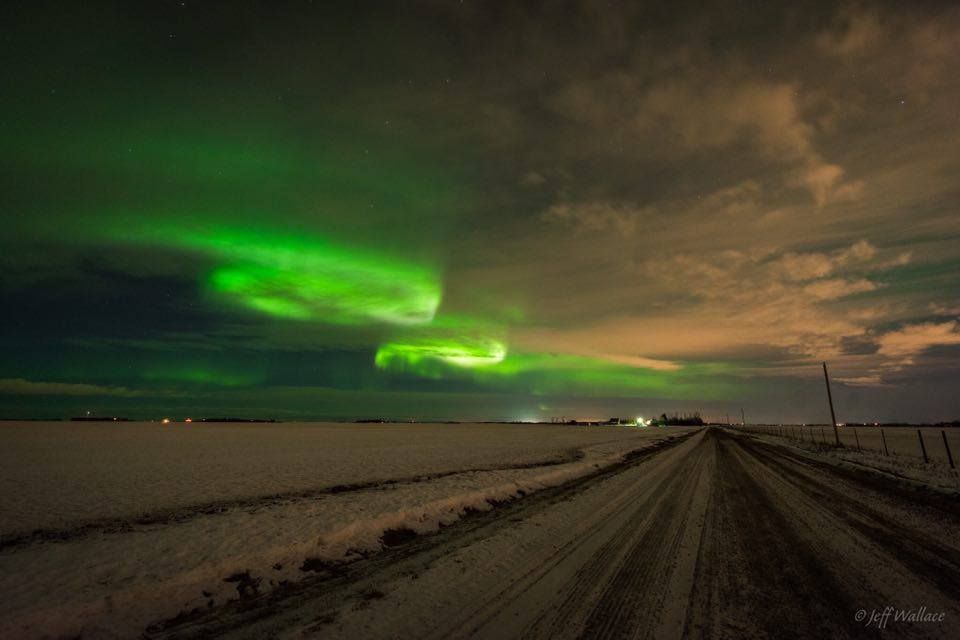Sky watchers were treated to a dazzling display of Aurora Borealis late Tuesday across Alberta.

In the early evening, partly cloudy skies near Edmonton and Calgary allowed for a near perfect view of the space weather phenomenon.
Theresa and Darlene Tanner are avid night sky photographers based out of Alix, Alta. who managed to snap some amazing photos.
The Tanners typically watch the Space Weather Prediction Centre and tweets from space meteorologist Tamitha Skov to help decide when to chase the Northern Lights.

Aurora intensity can be gauged by referring to the Estimated Planetary K index (Kp). The more intense a geomagnetic storm is, the higher the Kp value, which would indicate an increased likelihood of disturbances in the earth’s geomagnetic field.
Those disturbances can have an impact on electrical grids, radio signals, and spacecraft operations. And quite often during periods of high Kp-index values, the Aurora Borealis (and Aurora Australis in the southern hemisphere) will dance intensely.

Get daily National news
Chris Ratzlaff moderates the Alberta Aurora Chasers Facebook group, a great resource for local aurora reporting and discussions.
Ratzlaff said that Tuesday night he was “anticipating only minor auroral activity,” though there was a small chance for a “co-rotating interaction region,” which he describes as a small whirlpool moving down a stream ahead of the solar wind.
“That small chance actually happened, giving us several hours of good aurora last night, easily visible as far south as Lethbridge and even under the city lights of Calgary and Edmonton,” Ratzlaff said.
Stuart Milliner saw “a faint glow over Calgary” just before 8:00 p.m., so he decided to drive just northwest of the city to escape the light pollution. By 10:00 p.m., Milliner said “they got really intense” and lasted, on-and-off, until past midnight.
After hearing reports of active aurora, Jeff Wallace decided to drive north of Morinville to catch the show. Even though it was cloudy, his patience prevailed. Wallace said that when the cloud cover cleared around 10:00 p.m., he was able to witness a pretty great display.
https://twitter.com/Wherezjeff/status/694975202871099397
“It demands patience and accepting the probability that the display will be quiet,” Wallace added.
That advice was echoed by Theresa and Darlene Tanner, who said sometimes their best photos are from the nights with a poor aurora forecast.
“The best advice for a novice chaser is do not rely on the data, but to go out and physically look with your own eyes in a dark place away from light pollution,” said Theresa.




Comments